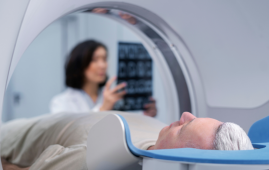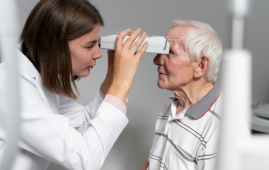

Using the strength of the human immune system, a team of engineers at the University of California San Diego has created a biodegradable polymer system to treat rheumatoid arthritis, an autoimmune and inflammatory illness.
The study draws on prior work with all-trans retinoic acid (ATRA), a substance produced naturally by the body that aids in cell growth and development, as well as growing clinical interest in immune system modulation as a means of treating cancer and autoimmune diseases. The team adds two significant innovations to earlier approaches by addressing these problems from the viewpoint of a biomaterials engineering lab: local release and utilizing the shared microenvironment for a long-lasting efficacy.
This technique involves injecting encapsulated ATRA straight into a rheumatoid arthritis-affected joint, where it acts for at least a few weeks. ATRA does this by converting disease-producing cells into regulatory T cells, which are then able to treat or avoid the disease elsewhere in the body.
Essentially, our system turns the disease site into a factory that produces regulatory T cells,” said David A. McBride, a chemical engineering graduate student at UC San Diego supervised by nanoengineering professor Nisarg Shah. “It uses a biodegradable biomaterial to facilitate the timed release of ATRA, which reprograms T cells so they can treat disease.”
The research was published in Advanced Science. McBride is a co-author of the paper.
“This is a very promising line of research utilizing the latest and greatest technology in immune engineering to combat arthritis,” said Iannis Adamopoulous, an associate professor of medicine at Harvard’s Beth Israel Deaconess Medical Center, Department of Medicine, Division of Rheumatology.
Currently, the FDA has authorized the small molecule ATRA for the treatment of acute promyelocytic leukemia. (APML). It may also be effective in managing autoimmune arthritis and reducing inflammation, according to 20 years of research. However, that technique depends on ATRA moving freely throughout the body, which can have negative side effects including immunosuppression and substantial off-target toxicity.
“Previous work established that ATRA has potential in treating autoimmune arthritis, but the route of administration precluded the work from being relevant to clinical translation,” said McBride.
When ATRA is encapsulated using biodegradable materials, it can be injected directly into joints at therapeutic concentrations but as it diffuses out of the joint, it enters circulation at much lower concentrations, minimizing or preventing unwanted effects. Without the controlled release afforded by the biomaterial encapsulation, patients would require multiple injections per day to achieve the same effects, which would be impractical in most cases.
When the human immune system is in good working order, helper T cells scour the body for pathogens that cause illness. A helper T cell can enlist additional cells to combat a pathogen once it is identified. “It’s kind of similar to how you might have police cars roaming the city, and when one sees a crime occurring, they call for backup to get the situation under control,” said McBride.
As a result of “mistaken identity,” which occurs when these cells attack a target that is actually a component of the body’s regularly functioning cells, many autoimmune diseases are caused. Such pathogenic T cells, which McBride refers to as “bad apples,” can proliferate in the body as a result of a mix of genetic and environmental factors and cause havoc when they call in large numbers of immune cells for pointless standoffs.
For example, “in type 1 diabetes, you have bad apples that call in reinforcements against your pancreas,” said McBride. In multiple sclerosis, it is against your neurons. In rheumatoid arthritis, it is against your joints. So, your immune system recognizes this as something to be attacked, and it goes and recruits a bunch of additional immune cells to these places and fights a war until all the pathogens are gone. Except that, in this case, it’s not attacking pathogens, but healthy parts of the body.”
Numerous current strategies interfere with the chemical signals immune cells use to communicate, successfully stopping pathogenic T cells from recruiting help while leaving the “bad apples” alone. Time-released They become regulatory T cells, or “good apples,” after being reprogrammed by ATRA. These cells are still capable of identifying and activating in the joints, but instead of mobilizing more immune cells, they work to reduce inflammation. The sustained-release formulation provides enough therapeutic exposure to tip the scales in places like joints where repetitive injections are not advised.
The anti-inflammatory regulatory T cells perform better thanks to long-lasting changes made by ATRA to the way that cells interpret DNA.
As a result, regulatory T cells unique to the diseased tissue are produced, treating T cells at the site of the illness. Then, when these cells are transferred to other illness sites, they can assist in reducing inflammation and encouraging healing. The cells’ disease-specificity prevents them from interfering with normal immune function, enabling them to supplement currently available therapies or offer patients who require their alternatives.
“The coolest part about this is that the treated site of disease, where the bad apples were previously proliferating, now becomes a place that can generate regulators that can now go patrol the body and actually prevent disease,” said McBride.
Disease-modifying anti-rheumatic drugs (DMARDs) are commonly used to treat rheumatoid arthritis patients, and for many of them, this method is effective. Front-line DMARDs have some major drawbacks and only adequately treat about one-third of patients.
First off, some patients who use DMARDs experience weakened immune responses to vaccines and increased susceptibility to infectious illness. In this regard, “the COVID-19 pandemic has brought a lot more understanding on the risks of immunosuppression into public awareness,” said McBride.
Additionally, there is no way to stop therapy if a risky infection develops because the majority of immunosuppressive medications used to treat rheumatoid arthritis remain in the body for up to two weeks. Due to the complexity of the illness, it is common for patients to use two or more treatments at once, which exacerbates the situation. Multiple strong immunosuppressants can increase the chance of cancer or infections.
“If you can instead have a treatment option that doesn’t have an immunosuppressive effect, you can really reduce the risk for patients that need multiple treatment modalities to keep their autoimmune disease in check,” McBride said. Finally, immunosuppressive medications for some patients may be helpful for a while before losing their potency. This may occur if novel disease pathways or antibodies that neutralize the medications develop in the patients’ bodies. Potentially, new therapies like this one could supplement DMARDs, making up for declining efficacy or starting with reduced doses.
“In well-controlled patients, reducing or eliminating the need for immunosuppressive drugs is desirable,” said Shah. “However, when it is attempted, studies have shown that the disease can flare up again. So having a non-immunosuppressive option could go a long way.”
Using a mixture of rodent and human cells, the team evaluated its biomaterial-encapsulation technique. They moved on to mouse models of autoimmune arthritis after this produced encouraging findings, getting closer to simulating the remarkable complexity of an actual instance of autoimmune disease in a human subject.
The work required meticulously tracking the cells from their injection sites to other locations where they circulated and demonstrated efficacy in fighting disease, as well as multiple disease models, each created to illustrate a particular aspect of the team’s theory.
Currently, the researchers are actively working toward commercialization. “As this is my first experience with something like this, it is difficult for me to estimate, but we are currently targeting approval to start clinical trials within five years,” said McBride. To evaluate possible commercialization routes, McBride has participated in the UC San Diego Institute for the Global Entrepreneur (IGE) NSF I-Corps and MedTech Accelerator programs.
more recommended stories
 Osteoarthritis Cause: Vitamin E Levels Not Linked
Osteoarthritis Cause: Vitamin E Levels Not LinkedA recent study published in Scientific.
 Transforming Neurological Treatment with 3D Printed Implants
Transforming Neurological Treatment with 3D Printed ImplantsInnovative bio-inks, nestled within the human.
 Researcher Develops MRI Scan Error Detection Sensor
Researcher Develops MRI Scan Error Detection SensorThe world’s first sensor prototype that.
 Antioxidants: Impact on Quality of Life in Acne Vulgaris
Antioxidants: Impact on Quality of Life in Acne VulgarisA recent study published in the.
 Brain Pulsations Linked to High BMI
Brain Pulsations Linked to High BMIAccording to a new study from.
 Brain Age Estimation: EEG Advancements in Neurology
Brain Age Estimation: EEG Advancements in NeurologyTo estimate brain age using EEG.
 Retinal Neurodegeneration in Parkinson’s Disease
Retinal Neurodegeneration in Parkinson’s DiseaseBy measuring the thickness of the.
 Role of Engineered Peptides in Cancer Immunotherapy
Role of Engineered Peptides in Cancer ImmunotherapyIn a recent publication in Nature.
 Neoadjuvant Chemotherapy Boosts Ovarian Cancer
Neoadjuvant Chemotherapy Boosts Ovarian CancerDuring the COVID-19 pandemic, US women.
 Nutrient Optimization: Vitamin D for Health
Nutrient Optimization: Vitamin D for HealthResearchers addressed the prevalence of vitamin.

Leave a Comment